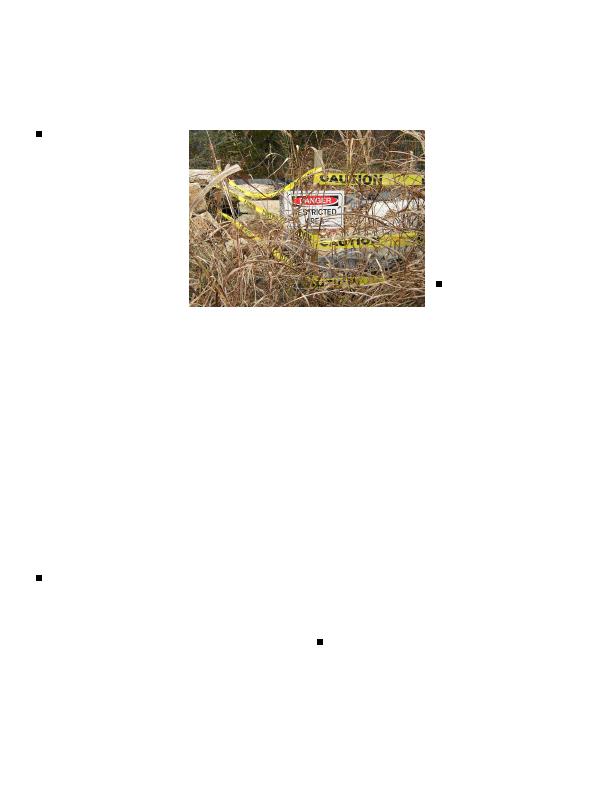
release, or hazardous material. It is a more limited
metals. Routine sample results from the Fordyce
response than a public health assessment is. To date,
Municipal public drinking water system were
58 documented health consultations have been con-
also reviewed. No NPDWS were exceeded in
ducted at 31 sites in Arkansas. Following are recent
either system.
examples of health consultations conducted in the
A health consultation released in April 2003 con-
state:
cluded that no exposure
Mountain Pine Pressure
could be documented be-
Treating, Inc.--A
cause the NPDWS were not
health consultation
exceeded, so the private and
released in January 2003
public water systems do not
for this site evaluated
pose a public health hazard.
sampling conducted
However, access to the site
to evaluate levels of
is unrestricted with many
pentachlorophenol and
physical hazards that could
arsenic in and around
be a public health concern to
two buildings on 8.57
anyone who enters the site.
acres of the site proposed
First Baptist Church--
for reuse. The 8.57 acres
Piles of abrasive blasting
will remain industrial,
grit containing lead-based
and the two buildings
Sign posted next to the lead grit pile
paints were dumped next
will be used temporarily
adjacent to the First Baptist Church site in
to the parking lot at the
until two new metal
Pocahontas.
First Baptist Church in
buildings are constructed.
Pocahontas. The waste was allegedly generated
The existing buildings will then be demolished.
during the paint stripping of a nearby bridge and
The health consultation concluded that under
dumped on the church property. In July 2002,
the piles were sampled for lead. ADH evaluated
surfaces inside the buildings is an indeterminate
the analytical results of the samples to determine
public health hazard. Pentachlorophenol
whether the piles of grit posed a public health
concentrations inside the buildings are lower than
hazard. Lead concentrations in the samples
adverse effect levels and do not pose a public
ranged from 585 to 2,020 parts per million. At
these concentrations, ADH considers the piles of
not pose a public health hazard. Once the new
blasting grit a public health hazard, especially to
buildings are constructed, the site will pose no
children who play on or with the piles.
public health hazard because the potential for
An exposure investigation collects information on
exposure to surfaces in the old buildings will be
specific human exposures through biologic sampling,
eliminated.
personal monitoring, related environmental assess-
Transitech, Inc.--The Transitech facility in
ment, and exposure-dose reconstruction. Since 1994,
Fordyce sandblasts, paints, repairs, and recycles
ATSDR staff members have conducted two exposure
investigations in Arkansas. Following is an example
railroad cars. Stacks of sand from sandblasting
can potentially run off into storm water ditches.
of such an investigation:
Other unknown waste materials and drums are
Ιn January 1998, ADH and ATSDR conducted
also on the site. A resident living next to the site
an exposure investigation to identify individuals
contacted ADH because he was concerned that
in a Texarkana community who had been
his drinking water was being contaminated by the
exposed to mercury. Two teenagers removed
Transitech operation.
23 pounds of elemental mercury from an
The resident's private drinking water well was
abandoned factory and distributed it to other
sampled for volatile and semivolatile organic
people in the community. ADOH tested blood
compounds, polychlorinated biphenyls, and
and urine specimens from 63 persons for


 Previous Page
Previous Page
